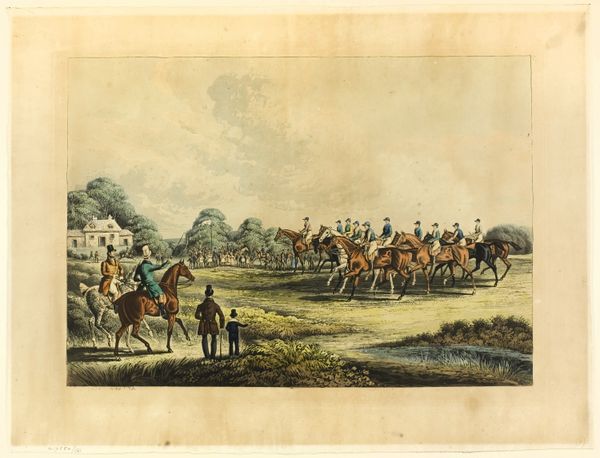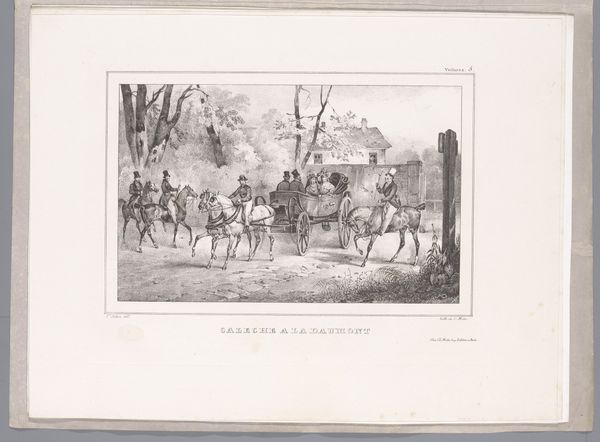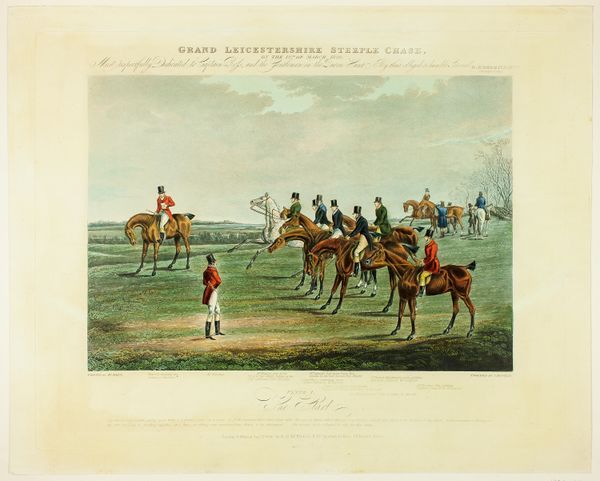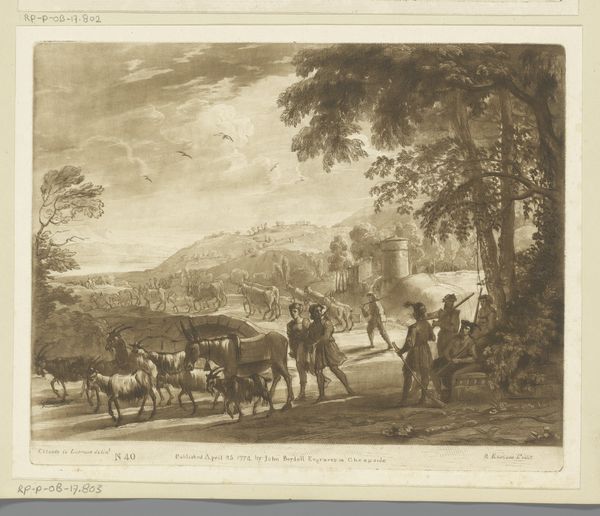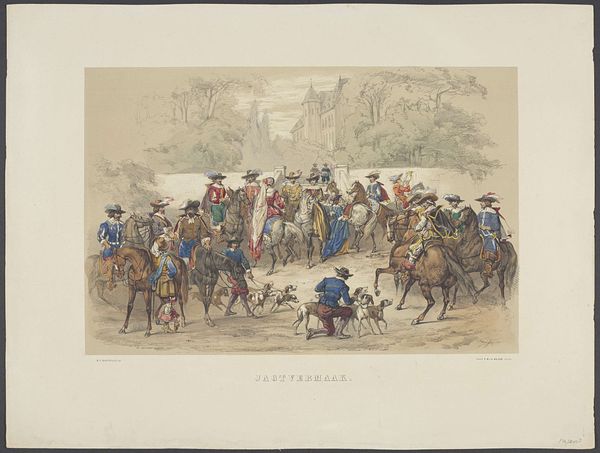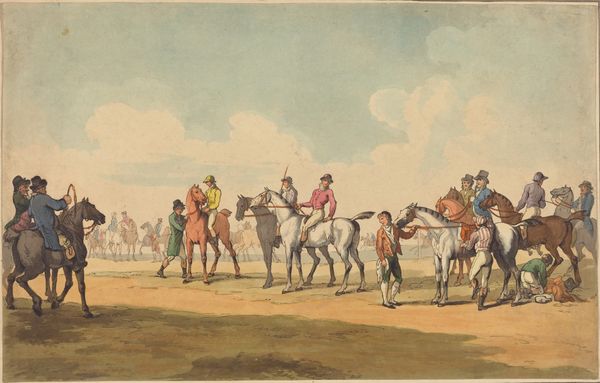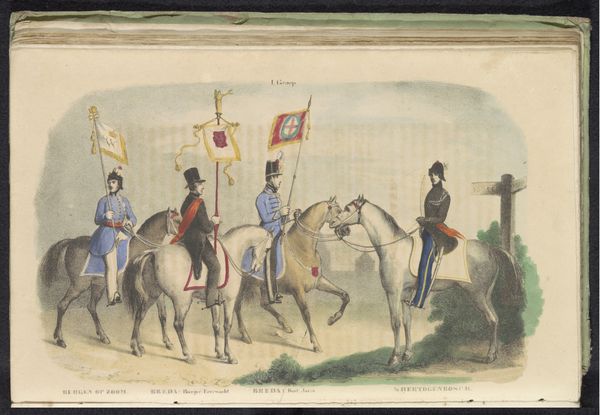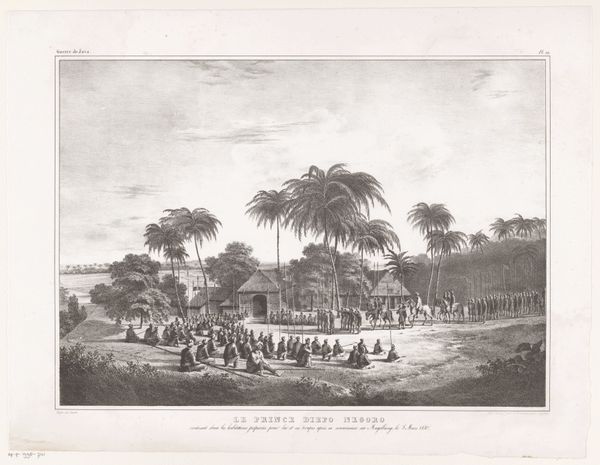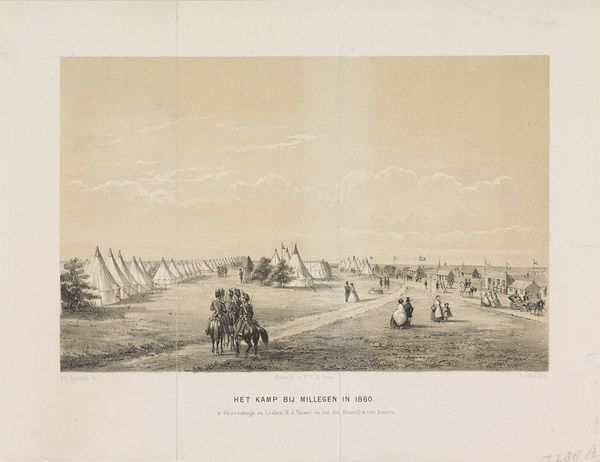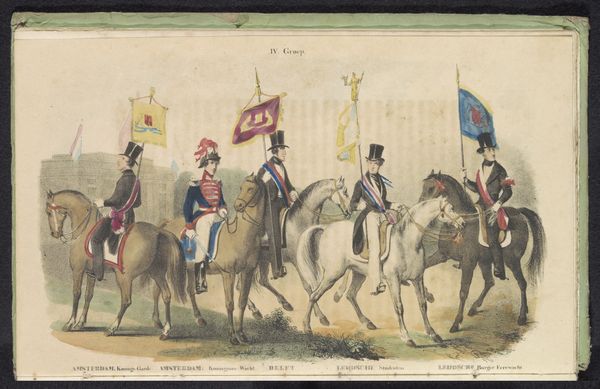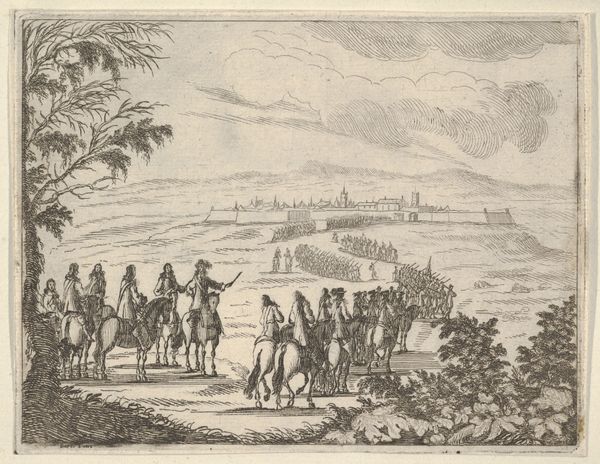
painting, watercolor
#
painting
#
landscape
#
figuration
#
watercolor
#
coloured pencil
#
romanticism
#
cityscape
#
watercolour illustration
#
genre-painting
Dimensions: height 149 mm, width 234 mm
Copyright: Rijks Museum: Open Domain
Editor: This is Albertus Verhoesen's "Keuring van paarden," created around 1829. It looks like a watercolour, depicting a horse inspection in a landscape setting. The colours are quite soft, almost faded, and the composition feels very structured, with lines of trees and horses creating a sense of order. How do you interpret the formal elements in this work? Curator: Indeed, the piece presents a clear articulation of pictorial space through linear perspective, note the arrangement of the figures and architecture within a structured framework. Observe how Verhoesen uses subtle variations in tone to differentiate the various planes within the image. This tonal control creates a sense of depth, yet, due to its execution in watercolour, it avoids strong contrasts, favouring instead a subdued atmospheric effect. The balance he strikes, and the use of medium contribute to the overarching aesthetic. How does the rhythmic pattern of the vertical tree trunks contribute to the painting's structure? Editor: I see, the repetition really emphasizes the order and control within the scene. And the pale blues and greens, combined with browns, help to set up an outdoor yet organized scenario. The positioning of horses and riders is pretty deliberate too, isn’t it? Curator: Precisely. Consider how the carefully plotted composition impacts your understanding. The figures form a narrative, though perhaps understated. But the structure – this use of lines and perspective - it is less about conveying any story, and much more about exploring formal and visual structure of an art object. Is it something you observed here, also? Editor: Absolutely, seeing how the artist uses these elements to achieve such balance really underscores the intent. I initially overlooked some things in trying to create a contextual interpretation, and I’m now realizing I should have considered structural relationships and organization too. Curator: These principles underpin much of artistic expression, particularly during the Romantic era with its inclination toward structure, clarity, and medium's exploitation, we could conclude that "Keuring van paarden" provides an intriguing demonstration.
Comments
No comments
Be the first to comment and join the conversation on the ultimate creative platform.
